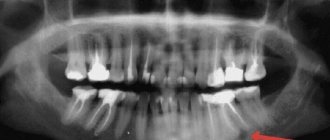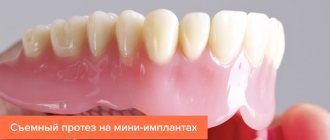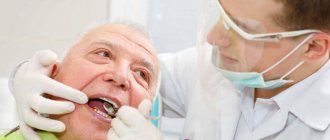Painkillers and NSAIDs (non-steroidal anti-inflammatory drugs) can in most cases be found in the medicine cabinet in every home. This is a very common drug group. Medicines are taken to reduce fever, relieve pain, and eliminate other discomfort and symptoms.
Do they pose a danger to the human body?
«Everything is medicine and everything is poison - it's all a matter of dose».
Paracelsus
The danger of overdosing on painkillers
In some cases, when indicated, doctors prescribe opioid treatment to patients.
These are very dangerous drugs that cause drug addiction quite quickly. All you have to do is not follow the doctor’s prescription, increase the period of use and dosage specified in the instructions or allowed by the doctor, and the dependence on the pills is in your pocket.
Opioids have great analgesic activity, so their abuse can easily lead to severe poisoning and even death.
- You can't convince me to get treatment
? - We will help you with motivation for treatment. As a rule, it is difficult for loved ones to persuade or force an addict to undergo treatment. World experts have developed EFFECTIVE motivation schemes, using which you can lead an addict to the decision to seek help. 8
Causes of poisoning
More than 12% of drug poisoning and overdose cases involve NSAIDs. Non-opioid analgesics are widely available and can be purchased at any pharmacy, as they are vital supplies. However, it is impossible to buy narcotic painkillers without a prescription. Their free distribution without a prescription is punishable by law. Painkillers often contain codeine, which is sought after by drug addicts.
Why does poisoning occur with painkillers:
- failure to comply with instructions or doctor's prescription;
- incorrect reception;
- doctor's error;
- increasing dosage;
- lack of knowledge about taking medication;
- low body resistance;
- combination with alcohol, drugs, other drugs;
- cumulative effect due to prolongation of the course of treatment;
- taking the drug for recreational purposes;
- intake during pregnancy;
- when attempting suicide.
Among the most dangerous non-steroidal anti-inflammatory drugs is phenacetin, previously contained in such drugs as Sedalgin and Askofen. This analgesic quite often caused the development of allergic reactions and disruption of internal organs. Today, a substance used as an antipyretic, paracetamol, is used to a greater extent in medicine.
If the patient takes the medicine as prescribed and prescribed by the doctor, an overdose of analgesics and local anesthetics occurs quite rarely. However, most often an overdose of anesthetics is used by drug addicts to achieve euphoria. Pharmacy drugs have long become a source of cheap “high” for them.
Overdose symptoms
Symptoms of an overdose of painkillers and NSAIDs depend on the individual characteristics of the human body, the drug taken and its dosage. In some cases, a person may become ill even after taking a therapeutic dose. Therefore, in order to prevent poisoning from local anesthetics and narcotic analgesics, it is necessary to strictly follow the instructions, which necessarily indicate the maximum daily dosages.
Acute poisoning with narcotic analgesics
Painkillers have different effects on the body, so the dose that can lead to intoxication is different.
Signs of poisoning:
- dizzy;
- be sick;
- vomiting occurs;
- It's difficult to breathe;
- weakness, drowsiness;
- increased sweating;
- loss of consciousness;
- pallor, cyanosis;
- the temperature drops;
- constipation, upset stomach;
- weakening of the pulse;
- swelling;
- pressure drop;
- convulsions, tremors.
Among the first signs: lethargy, drowsiness, lethargy, breathing problems. The condition is deteriorating quite quickly. Common complications that arise from an overdose of anesthetic: cerebral edema, pulmonary edema, cardiac arrest, renal failure. A severe overdose of local anesthetics manifests itself in paralysis of the respiratory center. If you do not call an ambulance in time, the risk of death is close to 75%.
Free phone number for a narcologist in Moscow and throughout Russia: 8 (800) 333-20-07. .
It is important to understand that a person who is poisoned by pills can fall into a coma. Even after emerging from this state, irreversible health consequences are possible: mental disorders, dysfunction of certain internal organs.
For recreational purposes, addicts often overdose on painkillers such as Tempalgin or Nurofen to achieve euphoria. Often, to enhance the effect, pharmaceutical drugs are mixed with alcohol and barbiturates, which significantly increases the intoxication of the body and increases the risk of death.
Do you want to know about the cost of services?
8 call our specialist
Non-narcotic analgesics
Non-opioid and non-steroidal anti-inflammatory drugs in pharmacology include drugs that do not have narcotic potential and are not used by drug addicts. These medications are used as anti-inflammatory, antipyretic, painkillers, etc. Regarding doses, for example, if the daily dose, according to the instructions, is 4 grams, then death can occur even after consuming 15-20 g.
Symptoms of Paracetamol overdose:
- liver dysfunction (the medicine is a dangerous toxin for the liver, causes bleeding disorders, hepatitis);
- disruption of the gastrointestinal tract (stomach pain, nausea, vomiting);
- damage to the central nervous system (drowsiness, weakness, lethargy);
- metabolic disorder;
- low pressure;
- renal failure (nephritis and other kidney diseases);
- disruption of the cardiovascular system due to general intoxication;
- encephalopathy.
Acute poisoning can last for 10-12 hours. You can also be poisoned by the drug if you use it for a long time in an increased dosage, as it accumulates in the tissues of the internal organs. Paracetamol is part of many modern drugs sold in pharmacies, including Spazmolex and Pentalgin. These are dangerous pharmaceutical drugs that addicts use to get a “high.” Often such substances are used for the purpose of suicide attempts.
Anonymous 24 hours a day Activity is licensed Patient accompaniment
Full range of narcology services:
- tests
- drug testing
- detox
- encoding
- psychiatry
- binder
- withdrawal symptoms
8+7
Salicylic acid and salicylates
It is quite easy to get poisoned by this common drug among people; it is enough to consume 10-40 g. The dosage of tablets is individual and depends on the condition of the patient’s body. Death is possible in 2% of cases.
Signs of salicylate poisoning:
- your head is spinning, your ears are ringing, your consciousness is confused;
- headache;
- hallucinations, hearing loss;
- chills, cramps;
- euphoric sensations;
- pain in the abdomen, under the ribs, heartburn;
- nausea, vomiting, upset stomach;
- violation of movement coordination;
- excited state;
- deterioration of cognitive functions;
- disruption of the functioning of the heart and blood vessels, internal organs;
- arrhythmia and tachycardia;
- increased fatigue;
- breathing problems, shortness of breath.
When using salicylic acid, for example, Aspirin in large quantities, internal bleeding may occur.
Painkillers for stomach cancer
About 70% of patients suffering from stomach cancer experience discomfort and pain. As a rule, pain is localized in the abdomen, but as the tumor progresses it can also occur in other places: in the back, ribs, bones. Neuropathic pain may occur as a symptom of paraneoplastic syndrome or a side effect of chemotherapy.
In addition to the three-step system, benzodiazepines, antidepressants, adrenal hormones (prednisolone, dexamethasone), sleeping pills, and antipsychotics are used to combat pain and discomfort in stomach cancer. For bone pain and pathological fractures, bisphosphonates are prescribed.
The doctor can perform two types of nerve blocks:
- Celiac plexus block
helps relieve pain in the upper abdomen. The conduction of pain impulses through the nerves of the stomach, liver, pancreas, gall bladder, intestines, and kidneys is blocked. - Hypogastric plexus block
helps relieve pain in the lower abdomen. During it, the nerves of the lower intestine, bladder, testicles, penis, prostate, uterus, ovaries, and vagina are blocked.
Plexus blocks can be performed using anesthetics and drugs that temporarily damage the nerves. With neurolysis, a drug is administered that destroys the plexus.
Emergency help
The consequences of an overdose of painkillers and drug poisoning are quite serious; without timely emergency medical care, a person can die. If you know that a loved one has taken too many medications, is using pharmaceutical drugs, and you see that he is turning pale and looks sick, you should immediately call a narcologist from the Center for Healthy Youth to your home. Delay in this case can cost your life. Of course, specialists at home will do everything possible to help the victim, but it is necessary to hospitalize him in a hospital for examination, intensive care and resuscitation.
Overdose of painkillers - what to do?
- Call our drug treatment center.
- Make sure the victim is conscious.
- Find out which particular drug caused the intoxication of the body.
- Try to determine the approximate dose.
- Lay the victim on his side and ensure that he does not choke on vomit.
- Provide fresh air, ventilate the room, remove clothing that may block breathing.
- Monitor your blood pressure, pulse and breathing.
- In case of mild or moderate poisoning, it is necessary to rinse the stomach, give the person activated charcoal or an enterosorbent known to you.
- If a person is not breathing or has no pulse, cardiopulmonary resuscitation is necessary.
If a person’s condition is serious, doctors at the drug treatment clinic begin to provide assistance on the way to the hospital. Naloxone is most often used for poisoning with narcotic analgesics. It is an opioid receptor antagonist, an antidote, which is widely used in modern narcology. It is used when coding alcoholism and drug addiction to reduce cravings for chemicals.
If the victim has trouble breathing, he may need a ventilator. Doctors prescribe treatment based on tests, examinations, examinations and diagnostics. It is important to understand that therapy is always individual and depends on existing indications and contraindications.
Ibuprofen
The active ingredient in these pain pills is ibuprofen, and its low concentration in the drug is excellent for treating pain in those who cannot afford an expensive drug. But the cheapness of Ibuprofen does not mean that it is ineffective. On the contrary, the tablets relieve pain well and begin to act as quickly as possible. Other advantages include minimal likelihood of overdose and ease of use. Ibuprofen is prohibited for children under 6 years of age. It is advisable to take the medicine after consulting a doctor in order to take into account all possible contraindications.
Ibuprofen
OJSC Pharmstandard-Leksredstva, Russia; Slavyanskaya Pharmacy, Russia; Rafarma, Russia; CJSC VERTEX, Russia; PJSC "Biokhimik", Russia; EKOlab, Russia; "Moskhimfarmpreparaty" named after. N. A. Semashko, Russia; Belmedpreparaty, Belarus; PJSC "Biosintez", Russia; Borisov medical plant drugs, Belarus; Sintez OJSC, Russia; JSC "Tatkhimfarmpreparaty", Russia; Novopharm-Biosintez LLC, Ukraine
Symptomatic treatment: - tension headaches and migraines;
- joint, muscle pain, - pain in the back, lower back, radiculitis; - pain when ligaments are damaged; - toothache; - painful menstruation; — febrile conditions during colds, flu; - rheumatoid arthritis, osteoarthritis. NSAIDs are intended for symptomatic therapy, reducing pain and inflammation at the time of use, but do not affect the progression of the disease. from 16
4.5 2 reviews
1552
- Like
- Write a review











